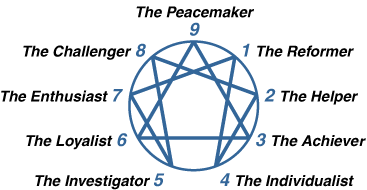The answer to the OP question will emerge once enough renaissance people establish an ecology.
Without handing over a definition of what I think that answer will be so people can short-cut and pursue it directly(*), here's how I see my role in all this.
(*) Indeed, this approach is a bit akin to the problem with the Wheaton table, which was originally intended to identify people's level of insight/framework in order to better community across the stages, to being used as a curriculum. Someone mentioned Goodhart's Law, the consequences of which are to be avoided.
In terms of steps, it's clear that there's some order to the statement that the "answer to the OP question will emerge once enough renaissance people establish an ecology", namely
- Make or attract more renaissance people (these are two strategies with the same outcome)
- Establish and maintain an ecology
- Support/suggest different kinds of emergence to increase the complexity of the ecology
Concrete examples of (1) include blogging, podcasting, writing a book, ... and basically "educating" people in postconsumer praxis. This is not just me (jacob) doing this.
Concrete examples of (2) include running this forum (which is an ecology) and making sure it is large enough for people to interact frequently; hence the need to avoid darknetting or toxic posting ... the analogies should be clear. Basically, the idea here is to create and maintain a medium for a renaissance culture to grow. Obviously, this could also be done as a physical community, but I think this is more challenging than gathering people on the internet. An example of a successful IRL ecology is MMM's coworking space.
Concrete examples of (3) include the MMGs, the physical meetups, the travel thread, and the swapping threads. These would not exist if it wasn't for a thriving ecology. These are essentially emerging ideas that could not have happened in isolation. Once the ideas were recognized, they were supported... basically a spark of an emergence best develops if it is supported. However, it must also be managed so as not to destroy the underlying fabric that made it possible. E.g. darknetting ... or the emergence of an oxygen producing bacteria that drove all anaerobic lifeforms underground.
So I think of emergence as the next stage of a "pyramid" that builds on a solid foundation.
Now, what if that foundation is not made out of renaissance people. Well, first of all, I don't want to be the one to say what someone either is or is not. This begets the same level of confusion and controversy as [misunderstanding] the MBTI. Renaissance behavior exists on a scale. If you think of it as an ecology, it is clear that if you introduce too many, who aren't very renaissance (lets say 10-30% rather than 50-80%), into an ecology, the ecology becomes something else and consequentially you'll have an "emergent something-else ecology".
To give an example of how such an evolution of a new paradigm may fail, if the ecology becomes completely inclusive whether by dumbing down the message to include the mainstream for commercial purposes (orange) or by accepting everybody who can fog a mirror out of ideological purposes (green), the kind of interactions will change as the ecology mostly starts focusing on "101"-stuff. The minority of "401" people will never be able to burn off the endless fog that is "how do I start investing" or "how do I join a community"-type questions.
Also, if the ecology gets chopped up into smaller groups or circles ... it will reduce the complexity of interactions and the kinds of species much like intersecting a forest with a bunch of roads that are hard to cross simplifies the ecology. Even though the ecology is almost the same size, it will not be as rich as before if starting smaller cliques becomes popular. In that case you will have "collapsing renaissance ecology".
I consider my role in ERE2 to tune the sliders of the the three dimensions available to maximize "interesting connections" and "complexity". That is not to say that this is all ERE2 is. It's just where my talents are. I tried for a while with some more direct "community organizing", but it turns out I suck at it because for the most part I don't enjoy the nitty-gritty of talking to people all the time. But these efforts are also needed and fits in with the overall theme of 1-2-3. As such people can play any role they want in this.
